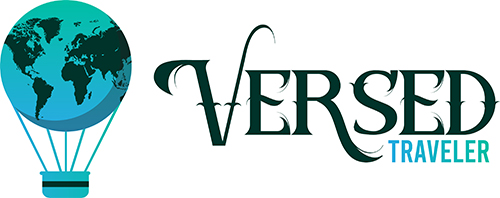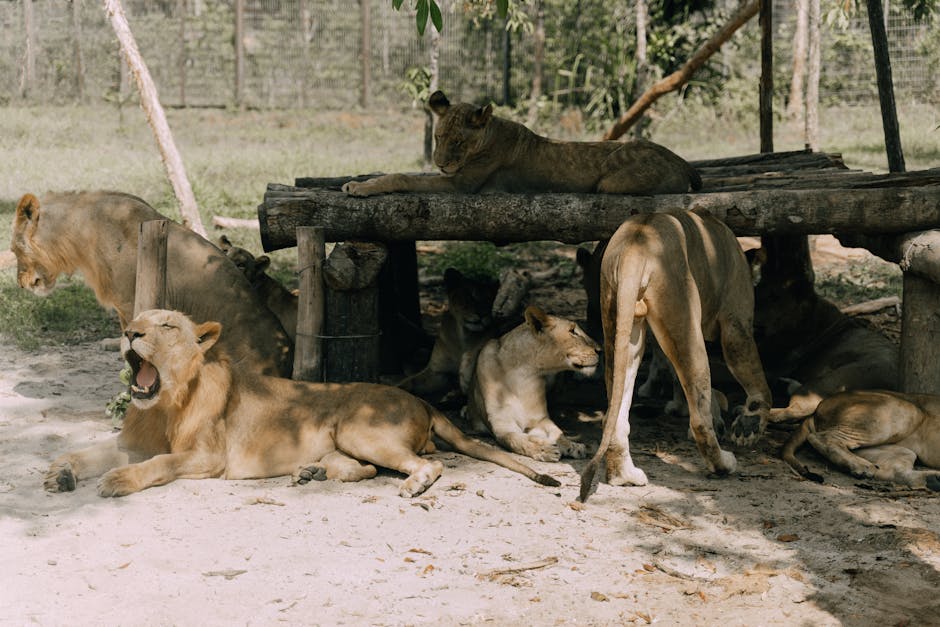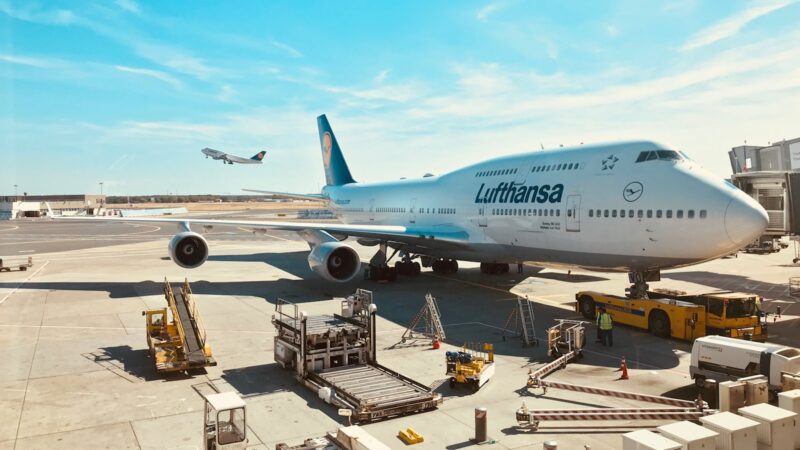Best zoos for conservation are sanctuaries where the focus goes far beyond merely displaying animals; these establishments lead in preserving species and nurturing biodiversity. Some of these zoos excel in conservation efforts, including the San Diego Zoo, Bronx Zoo, and St. Louis Zoo, each playing pivotal roles in protecting endangered species and rewilding initiatives.
When choosing which zoos to visit, recognize those committed to conservation and ethical treatment. Engage in places that not only educate but also contribute actively to animal welfare and rescue efforts. These ethical zoos recreate natural habitats, enabling animals to thrive and visitors to witness wildlife responsibly.
My name is Gabrielle Reese, an expert in animal conservation and travel tips, offering insights into the best zoos for conservation. With a background combining business acumen and extensive travel, I bring a well-rounded perspective to this exploration. In the sections that follow, I’ll guide you through the most inspiring zoos leading the charge in conservation.

Know your Best zoos for conservation terms:
Table of Contents
ToggleTop 10 Best Zoos for Conservation
When it comes to conservation, these ten zoos stand out for their dedication to protecting wildlife and their habitats. They go beyond just showcasing animals—they actively engage in preserving species and nurturing biodiversity.
San Diego Zoo
The San Diego Zoo is renowned for its work with endangered animals. It partners globally to share research on rehabilitation and conservation, making strides in saving species from extinction. Their efforts in breeding and reintroducing the California Condor highlight their commitment to conservation.
Austin Zoo
The Austin Zoo focuses on animal rescue and rehoming. It started as a goat ranch and now shelters over 300 animals from more than 100 species. This zoo provides a safe haven for exotic animals needing rescue and rehabilitation.
Indianapolis Zoo
The Indianapolis Zoo is a leader in conservation efforts, supporting global initiatives to save endangered species. They adopt eco-friendly practices and create habitats that mimic the wild, housing over 1,400 animals.
Woodland Park Zoo
In Seattle, the Woodland Park Zoo recreates natural habitats and runs breeding programs to help endangered species. Their long-term project on Western Pond Turtles shows their dedication to species recovery.
St. Louis Zoo
The St. Louis Zoo offers free admission and is home to 19,000 animals across 600 species. Their WildCare Institute takes a holistic approach to ecosystem healing, contributing to conservation successes like the American Burying Beetle Recovery Program.
Bronx Zoo
Located in New York City, the Bronx Zoo spans over 265 acres and is home to award-winning habitats. They employ thousands of conservationists to protect endangered exotic animals globally.
Henry Doorly Zoo and Aquarium
In Omaha, the Henry Doorly Zoo and Aquarium features a geodesic dome that creates a realistic desert environment. Their worldwide conservation efforts include successful programs like the Salt Creek Tiger Beetle Captive Breeding.
Columbus Zoo
The Columbus Zoo in Ohio is known for breeding endangered animals, such as polar bear cubs. Their facilities include a massive coral reef tank and excellent primate habitats, supporting species conservation.
Alaska Zoo
The Alaska Zoo in Anchorage focuses on arctic and subarctic animals. They are particularly known for their polar bear rescue efforts, offering a unique experience to see these creatures in their natural-like environments.
Denver Zoo
Finally, the Denver Zoo leads in creating realistic habitats for its 4,000 creatures. They were pioneers in moving away from traditional enclosures, prioritizing conservation and animal welfare.
These zoos are exemplary models of how institutions can contribute to conservation and ethical animal treatment. They provide educational experiences while actively participating in global efforts to preserve wildlife.
San Diego Zoo
The San Diego Zoo is a trailblazer in the field of wildlife conservation. It’s not just a place to see animals—it’s a global leader in saving them. One of their most notable achievements is the California Condor recovery program. Through dedicated breeding and reintroduction efforts, the zoo has helped this once nearly extinct species make a remarkable comeback.
But the San Diego Zoo doesn’t stop there. They are deeply involved in the rehabilitation of endangered animals. This means they not only care for animals in captivity but also work tirelessly to prepare them for a return to the wild. These efforts are critical for species that face threats from habitat loss and climate change.
Global partnerships are at the heart of the San Diego Zoo’s conservation strategy. They collaborate with organizations around the world to share knowledge and resources. This network allows them to tackle conservation challenges more effectively. For example, their involvement in the San Diego Zoo Global Conservation Project spans 45 countries, highlighting their commitment to a worldwide impact.
The zoo’s dedication to endangered species and their habitats is also evident in the numbers. They’ve successfully released 44 species back into the wild and have over 380 collaborative partnerships. These partnerships extend their reach and effectiveness, ensuring that their conservation efforts are as impactful as possible.
In summary, the San Diego Zoo is not just a top destination for animal lovers—it’s a vital hub for global conservation efforts. Their work with endangered animals, rehabilitation programs, and international collaborations set a high standard for zoos worldwide.
Austin Zoo
The Austin Zoo is not your typical zoo. It’s a haven for rescued animals, focusing on rehabilitation and rehoming rather than traditional exhibits. This unique approach makes it a standout for those interested in animal welfare and conservation.
Animal Rescue is at the core of the Austin Zoo’s mission. Many animals here come from difficult backgrounds. Some were surrendered by owners who couldn’t care for them anymore. Others were rescued from abusive situations or retired from performing acts. The zoo provides a safe and nurturing environment for these animals to recover and thrive.
The zoo is also home to a variety of exotic animals. Visitors can meet lions, tigers, and bears, along with other fascinating creatures like lemurs and tortoises. Each animal has its own story, often involving rescue from less-than-ideal circumstances. The Austin Zoo ensures they receive the care and respect they deserve.
Rehoming efforts are another critical aspect of the zoo’s work. The staff is dedicated to finding permanent homes for animals that can be adopted. For those that can’t be rehomed, the zoo provides lifelong sanctuary. This commitment to rehoming and sanctuary helps reduce the number of animals in need of rescue.
One of the zoo’s most compelling stories involves a group of capuchin monkeys. These monkeys were rescued from a failed zoo and brought to Austin, where they now live in a specially designed habitat that mimics their natural environment. This is just one example of how the Austin Zoo goes above and beyond to ensure animal welfare.
The Austin Zoo is a place where animals find a second chance at life. Their focus on rescue, rehabilitation, and rehoming sets them apart as a leader in ethical animal care and conservation. For visitors, it’s an opportunity to support a mission that truly makes a difference in the lives of animals.
Indianapolis Zoo
The Indianapolis Zoo is a leader in conservation efforts, setting an example for zoos worldwide. Their commitment to protecting endangered species and implementing eco-friendly practices makes them a top choice for those interested in ethical animal care.
Conservation Efforts
At the heart of the Indianapolis Zoo’s mission is the conservation of endangered species. The zoo participates in global programs to save animals like the African elephant and Amur tiger. These efforts are not just about keeping animals in captivity; they focus on preserving their habitats and ensuring their survival in the wild.
One standout initiative is their work with orangutans. The zoo has a state-of-the-art exhibit that not only mimics the orangutans’ natural environment but also serves as a platform for research and education. This helps raise awareness about the challenges these animals face in the wild, such as habitat destruction.
Eco-Friendly Practices
The Indianapolis Zoo is also committed to reducing its environmental footprint. They’ve adopted eco-friendly practices like using solar panels to generate power and recycling waste to minimize landfill contributions. These efforts are part of a broader strategy to make the zoo as sustainable as possible.
Visitors can see these practices in action through educational programs that teach the importance of conservation and sustainability. The zoo’s green initiatives serve as a model for other institutions aiming to balance animal care with environmental responsibility.
Endangered Species
The zoo is home to over 1,400 animals, many of which are endangered. They provide habitats that closely resemble the animals’ natural environments, ensuring they have the space and resources they need to thrive. This approach not only benefits the animals but also improves the visitor experience by offering a more authentic glimpse into the lives of these creatures.
For instance, the zoo’s Plains exhibit features a large savanna where giraffes, zebras, and other African animals roam freely. This setup not only supports the animals’ physical and mental well-being but also educates visitors about the importance of preserving these majestic species.
In summary, the Indianapolis Zoo’s dedication to conservation efforts, eco-friendly practices, and the care of endangered species makes it a guide of ethical animal care. Visitors can enjoy a unique experience while supporting initiatives that have a real impact on wildlife conservation.
Woodland Park Zoo
The Woodland Park Zoo is a shining example of how zoos can make a real difference in conservation. Known for its focus on natural habitats and breeding programs, this zoo plays a crucial role in protecting endangered species.
Natural Habitats
At Woodland Park Zoo, animals live in spaces designed to mimic their natural environments. This approach not only improves animal welfare but also educates visitors about the ecosystems these creatures call home. For example, the zoo’s Northern Trail exhibit replicates the rugged landscapes of Alaska and the Pacific Northwest, providing a home for grizzly bears, gray wolves, and other native species.
Breeding Programs
The zoo is deeply involved in breeding programs aimed at saving endangered species. These programs are part of a larger effort to maintain genetic diversity and support population recovery. One notable success is their work with the Western pond turtle. In collaboration with other organizations, Woodland Park Zoo has helped reintroduce these turtles into their natural habitats, boosting their numbers in the wild.
Endangered Species
Woodland Park Zoo is home to many endangered species, including the Malayan tiger and the red panda. By providing safe, enriched environments, the zoo ensures these animals have the best chance to thrive. The zoo’s efforts extend beyond its gates, too. They support conservation projects worldwide, helping to protect habitats and wildlife in their native regions.
Woodland Park Zoo is more than just a place to see animals. It’s a hub for conservation, education, and inspiration. Visitors not only learn about the importance of preserving biodiversity but also get a look at the incredible work being done to protect our planet’s most vulnerable species.
St. Louis Zoo
The St. Louis Zoo stands out as a guide of conservation and education. With its free admission policy, it ensures that everyone can access its wealth of knowledge and experience the wonders of wildlife conservation.
Free Admission
One of the most remarkable features of the St. Louis Zoo is its commitment to accessibility. By offering free admission, the zoo opens its gates to a broad audience, allowing visitors from all walks of life to engage with and learn about the natural world. This approach democratizes education and fosters a greater appreciation for wildlife conservation among the public.
WildCare Institute
At the heart of the St. Louis Zoo’s conservation efforts is the WildCare Institute. This institute is dedicated to protecting animals from threats like disease, poaching, and habitat loss. Through its various programs, the institute works both locally and globally to ensure the survival of endangered species.
-
Disease Prevention: One of the key focuses is studying the impact of infectious diseases on wildlife and ecosystems. This research helps develop strategies to mitigate these threats.
-
Habitat Conservation: By supporting initiatives that preserve natural habitats, the WildCare Institute plays a crucial role in maintaining biodiversity.
Ecosystem Healing
The St. Louis Zoo is deeply involved in ecosystem healing efforts. It recognizes that protecting individual species goes hand in hand with preserving their habitats and ecosystems. The zoo’s work extends beyond its borders, collaborating with partners worldwide to restore ecosystems and support the animals that depend on them.
One notable project is the Ozark Hellbender Augmentation Program, which aims to boost the population of the endangered Ozark hellbender salamander. This initiative highlights the zoo’s commitment to ecosystem restoration and the protection of native species.
In summary, the St. Louis Zoo is not just a place for animal exhibits. It’s a hub for conservation, education, and community engagement, all offered with no entry fee, making it a valuable resource for everyone interested in protecting our planet’s biodiversity.
Bronx Zoo
The Bronx Zoo is a leader in wildlife conservation, standing out with its award-winning habitats and dedication to protecting endangered exotic animals. Nestled in the heart of the Bronx, this zoo transports visitors to far-off landscapes like Tanzania and Australia, all within its 260 acres of hardwood forest.
Award-Winning Habitats
The zoo has been recognized for its innovative and immersive habitats. These environments are designed to mimic the natural surroundings of the animals, providing them with a space that feels like home.
-
Tiger Mountain: This exhibit allows visitors to observe majestic tigers in a setting that closely resembles their natural habitat. It’s not just a viewing experience; it’s an educational journey into these incredible creatures.
-
Butterfly Garden: A favorite among visitors, this garden offers a serene escape filled with vibrant colors and fluttering wings. The garden supports conservation efforts by educating the public about the importance of pollinators.
Conservationists at Work
The Bronx Zoo is not just about displaying animals; it’s a hub for conservationists who are working tirelessly to save wildlife and wild places. These experts are involved in various projects and research initiatives aimed at preserving biodiversity.
-
Zoo Hospital: The zoo operates its own hospital, providing top-notch care for its residents. This facility is crucial for the rehabilitation and recovery of sick or injured animals, ensuring they have the best chance at a healthy life.
-
Research Programs: Conservationists at the Bronx Zoo engage in research that supports the survival of species in the wild. This includes studying animal behavior, genetics, and health to inform conservation strategies.
Endangered Exotic Animals
Home to over 6,000 animals, the Bronx Zoo plays a vital role in the survival of endangered exotic animals. It houses species that are rare and at risk, providing them with a safe environment and a chance to thrive.
-
Przewalski’s Horses: Once extinct in the wild, these horses are part of a successful breeding program at the zoo. The program aims to reintroduce them into their natural habitats, showcasing the zoo’s commitment to species restoration.
-
Turkmenian Flare-Horned Markhors: These elusive animals can be seen during the summer-only monorail ride, which offers a unique perspective on Asian wildlife. The zoo’s efforts in preserving such species highlight its role in global conservation.
The Bronx Zoo is more than just a place to see animals; it’s a center for conservation and education. By visiting, you support their mission to save wildlife and learn about the critical work being done to protect our planet’s biodiversity.
Henry Doorly Zoo and Aquarium
The Henry Doorly Zoo and Aquarium in Omaha is a marvel of conservation and innovation. Known for its pioneering habitats and dedication to global wildlife preservation, this zoo offers a unique experience that combines education with awe-inspiring encounters.
Geodesic Dome and Desert Environment
One of the zoo’s standout features is the geodesic Desert Dome, which holds the title of the world’s largest indoor desert. This architectural wonder replicates the ecosystems of the Namib and Sonoran deserts, as well as Australia’s Red Center.
-
Interactive Experience: Visitors can explore vast landscapes under the dome, encountering animals like meerkats and roadrunners. The immersive environment allows guests to feel as if they are trekking through real desert landscapes.
-
Educational Insights: The Desert Dome is not just about the visual spectacle; it serves as an educational tool. Information panels and interactive displays educate visitors about the delicate balance of desert ecosystems and the unique adaptations of the species that inhabit them.
Worldwide Conservation Efforts
Beyond its impressive exhibits, the Henry Doorly Zoo is deeply involved in worldwide conservation efforts. The institution takes a proactive approach to wildlife preservation, both in the zoo and in the wild.
-
Molecular Genetics and Conservation Medicine: The zoo’s research extends into molecular genetics and reproductive physiology, contributing to the conservation of endangered species. This scientific approach is crucial for understanding and tackling the challenges faced by wildlife.
-
Global Partnerships: Collaborating with international organizations, the zoo supports projects aimed at protecting species and their habitats around the globe. These partnerships improve the zoo’s impact, allowing it to contribute to conservation on a larger scale.
Conservation and Education
The Henry Doorly Zoo is committed to conservation and education, offering programs that inspire and inform the public about the importance of protecting our planet’s biodiversity.
-
Wildlife Education Programs: These programs engage visitors of all ages, fostering a deeper understanding of conservation issues. The zoo’s initiatives aim to inspire the next generation of conservationists, equipping them with the knowledge and passion to make a difference.
-
Conservation Success Stories: The zoo takes pride in its success stories, such as the recovery of the Salt Creek tiger beetle. Through captive breeding and reintroduction programs, they’ve made significant strides in preserving this species, demonstrating the power of dedicated conservation efforts.
The Henry Doorly Zoo and Aquarium is a testament to what can be achieved when innovation meets dedication. By visiting, you not only witness incredible wildlife but also support vital conservation work that spans the globe.
Columbus Zoo
The Columbus Zoo is a standout when it comes to conservation, offering a blend of exciting exhibits and impactful conservation efforts.
Breeding Endangered Animals
At the heart of the Columbus Zoo’s mission is its dedication to breeding endangered animals. The zoo participates in numerous Species Survival Plans (SSPs) to help ensure the survival of endangered species. These programs focus on maintaining genetic diversity and healthy populations of animals, both in captivity and in the wild.
- Success Stories: The zoo has seen success with several species, including cheetahs and red pandas. By carefully managing breeding programs, the Columbus Zoo helps bolster populations of these vulnerable animals.
Coral Reef Tank
An unexpected gem at the Columbus Zoo is its coral reef tank. This vibrant exhibit showcases the beauty and complexity of coral ecosystems, which are vital to ocean health.
-
Educational Focus: The reef tank serves as a tool to educate visitors about the importance of coral reefs and the threats they face, such as climate change and pollution. Through this exhibit, the zoo raises awareness about the need to protect these underwater ecosystems.
-
Conservation Efforts: The zoo works to support coral conservation by participating in breeding programs for endangered coral species, helping to restore damaged reefs around the world.
Primate Habitats
The Columbus Zoo is renowned for its primate habitats, which provide a glimpse into the lives of some of the most fascinating and intelligent animals on the planet.
-
Naturalistic Enclosures: The zoo’s primate enclosures are designed to mimic natural habitats, allowing animals to engage in instinctive behaviors. This approach not only improves the well-being of the primates but also offers visitors a more authentic viewing experience.
-
Research and Education: The zoo is involved in primate research, studying behaviors and social structures to better understand these complex animals. Educational programs teach visitors about the importance of primate conservation and the threats they face in the wild.
The Columbus Zoo’s commitment to conservation and education makes it a leader in wildlife preservation. By visiting, you support efforts to protect endangered species and learn about the vital role zoos play in conservation.
Alaska Zoo
The Alaska Zoo in Anchorage is a haven for arctic animals, offering visitors a unique opportunity to see wildlife native to the harsh climates of the north. With a special focus on conservation and rescue, this zoo stands out for its commitment to polar bear rescue and rehabilitation.
Arctic Animals
Nestled in the city of Anchorage, the Alaska Zoo is home to a variety of arctic animals. These include species that thrive in cold environments, such as musk oxen, snow leopards, and of course, polar bears. The zoo provides specialized care to meet the unique needs of these animals, ensuring they live in environments that mimic their natural habitats as closely as possible.
- Diverse Species: Besides polar bears, visitors can also see other fascinating arctic creatures like wolves and lynxes. The zoo’s exhibits offer a glimpse into the lives of these animals, showcasing their adaptations to survive in extreme conditions.
Polar Bear Rescue
One of the Alaska Zoo’s most significant contributions to wildlife conservation is its polar bear rescue program. Polar bears face numerous threats due to climate change and habitat loss, making rescue efforts critical for their survival.
-
Rescue and Rehabilitation: The zoo works tirelessly to rescue orphaned or injured polar bears, providing them with medical care and a safe environment to recover. This program plays a crucial role in giving these majestic animals a second chance.
-
Educational Outreach: Through its polar bear rescue initiatives, the zoo educates the public about the challenges facing polar bears in the wild. By raising awareness, the zoo hopes to inspire conservation efforts and encourage actions to combat climate change.
Anchorage Setting
Located in the heart of Anchorage, the Alaska Zoo offers a unique blend of natural beauty and wildlife conservation. The zoo’s setting provides an ideal backdrop for learning about the arctic ecosystem and the importance of preserving it.
-
Community Engagement: The zoo engages with the local community through educational programs and events, fostering a connection between people and the wildlife native to their region.
-
Visitor Experience: Visitors to the Alaska Zoo can enjoy a serene and educational experience, exploring exhibits that highlight the beauty and resilience of arctic animals.
The Alaska Zoo’s dedication to conservation and education makes it a must-visit for those interested in arctic wildlife and the efforts to protect it. By supporting the zoo, visitors contribute to the ongoing mission to save endangered species and their habitats.
Denver Zoo
The Denver Zoo is a leader in creating realistic habitats and advancing conservation efforts. It houses over 4,000 creatures from more than 600 species, offering an immersive experience for visitors and a haven for animals.
Realistic Habitats
Denver Zoo was the first in the U.S. to replace traditional enclosures with habitats that mimic the natural environments of its animals. This approach improves animal welfare by providing spaces that allow natural behaviors and interactions.
-
Innovative Design: The zoo’s habitats are carefully crafted to reflect the diverse ecosystems of the animals’ native lands, from African savannas to tropical rainforests.
-
Animal Enrichment: By simulating natural conditions, the zoo promotes physical and mental stimulation for its inhabitants, ensuring they lead healthy and active lives.
Conservation Efforts
Denver Zoo is deeply committed to conservation, both locally and globally. Its programs focus on protecting endangered species and their habitats, aligning with the zoo’s mission to inspire communities to save wildlife for future generations.
-
Wild Encounters: These educational programs allow visitors to learn about conservation directly from the experts working to protect species like penguins and cheetahs.
-
Global Partnerships: The zoo collaborates with organizations worldwide to support conservation initiatives, from breeding programs to habitat restoration efforts.
4,000 Creatures
Home to a vast array of animals, Denver Zoo offers a unique opportunity to observe and learn about wildlife from around the globe.
-
Diverse Species: From majestic elephants to playful otters, the zoo’s collection is both extensive and diverse, providing something for everyone to enjoy.
-
Educational Programs: Interactive exhibits and educational talks help visitors understand the importance of biodiversity and the role they can play in conservation.
Denver Zoo’s focus on realistic habitats and conservation makes it a top destination for those interested in ethical wildlife experiences. By visiting, guests support the zoo’s efforts to protect animals and their environments.
Frequently Asked Questions about Best Zoos for Conservation
What is the most ethical zoo in the world?
When it comes to ethical practices, the Singapore Zoo often tops the list. Known for its open-concept exhibits, the zoo emphasizes animal welfare by providing spacious environments that closely resemble natural habitats. This approach not only improves the well-being of the animals but also educates visitors about the importance of conservation.
What is the #1 rated zoo in America?
The San Diego Zoo is frequently recognized as the top-rated zoo in America. Its innovative approach to zoo design and conservation sets it apart. With a diverse collection of animals, the zoo is at the forefront of breeding programs and global partnerships aimed at protecting endangered species. The zoo’s efforts in research and rehabilitation make it a leader in conservation.
What zoos actually help animals?
Several zoos in the United States are renowned for their contributions to animal conservation and welfare:
-
Phoenix Zoo: Known for its commitment to conservation, the Phoenix Zoo participates in various breeding and recovery programs for endangered species.
-
National Zoo: Located in Washington, D.C., the National Zoo is part of the Smithsonian Institution and focuses on extensive research and conservation efforts.
-
Lincoln Park Zoo: This Chicago-based zoo is free to the public and invests heavily in conservation science and animal care.
-
Columbus Zoo: As highlighted earlier, the Columbus Zoo is dedicated to breeding endangered animals and maintaining habitats that support species survival.
-
Cheyenne Mountain Zoo: Nestled in Colorado, this zoo is committed to conservation education and species preservation through innovative programs.
These zoos not only provide safe havens for animals but also engage in active conservation efforts to ensure the survival of species both in captivity and in the wild.
Conclusion
At Versed Traveler, we believe that travel is about more than just seeing new places—it’s about understanding and appreciating the world around us. When it comes to visiting zoos, choosing those that prioritize conservation and animal welfare can make your experience more meaningful. Our comprehensive travel information and tips can guide you to the best zoos for conservation, ensuring your visit supports ethical practices and contributes to the protection of wildlife.
Travel Tips for Ethical Zoo Visits:
-
Research Before You Go: Look for zoos that are accredited and have a strong commitment to conservation and animal welfare.
-
Engage with Educational Programs: Many zoos offer programs that educate visitors about the challenges facing wildlife. Take advantage of these opportunities to learn more.
-
Support Conservation Efforts: Consider donating to zoos that have active conservation projects or participate in their membership programs to support ongoing efforts.
-
Visit Zoos with Naturalistic Habitats: Zoos that provide spacious and naturalistic environments for animals often have higher welfare standards.
By choosing to visit zoos that focus on conservation, you can enjoy your trip while also playing a part in protecting our planet’s incredible biodiversity.
For more information on ethical zoos in the U.S. and other travel tips, visit our Best Ethical Zoos in the U.S. page. Let’s explore the world responsibly and make a positive impact wherever we go.











